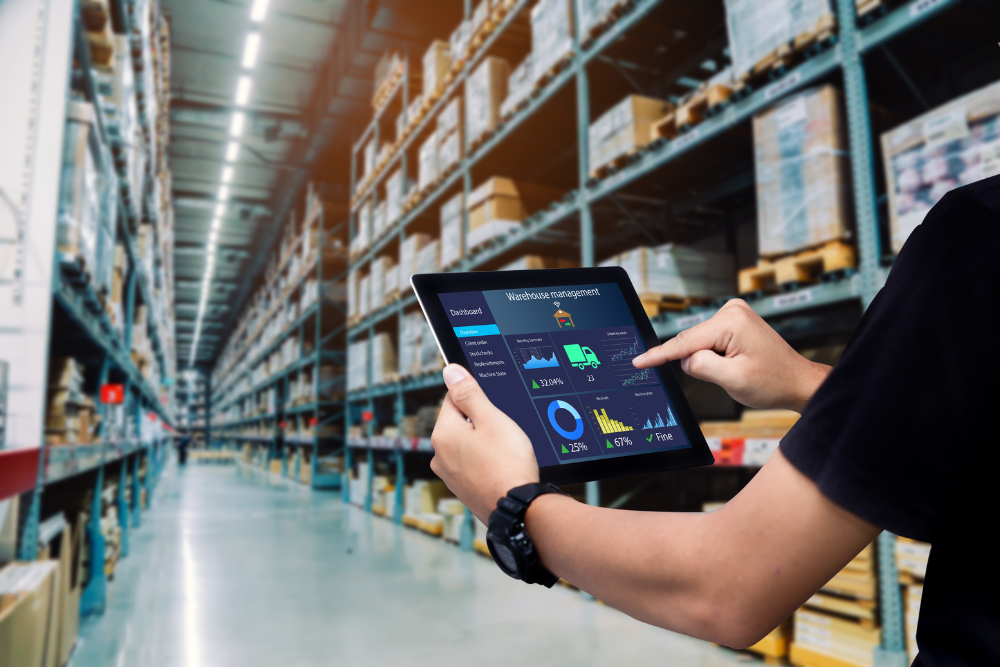AI in E-Commerce is changing the digital marketplace with unprecedented rapidity. What were once considered distant futuristic ideas have now practically entered the realm of accounting terminologies and day-to-day operational realities for businesses all over. This tech evolution is the very backbone of how consumers shop and how businesses carry out operations on the net. With the global e-commerce sales, set for a staggering $8.1 trillion mark by 2026, it is imperative for businesses to understand the AI driving force behind such phenomenal growth if they are to stay in competition in the ever-evolving digital landscape.
In fact, AI technologies are not merely improving customer experience; they are putting a totally new structure to it.Let us discuss the top 10 ways AI is influencing the online shopping experience.

1. Personalized Shopping Experiences

Product suggestions for everyone are now history. E-commerce platforms now have state-of-the-art machine learning algorithms to analyze customer behavior, purchase history, and browsing habits for accurate product recommendations. Amazon’s recommendation engine is a prime example that contributes to 35% of its revenues.
2. Enhanced Customer Service

A customer could be served instantaneously at any hour, thanks to AI chatbots. The virtual assistants handle anything from a simple product inquiry to more complex issues surrounding order processing with incredible precision when understanding natural language.
In e-commerce, advanced AI-powered chatbots can engage the customer through the complete purchase process, including product comparisons and deeper questions and recommendations for uses. Immediate assistance would therefore make for a fine customer experience while keeping operational costs low for the businesses.
Modern AI chatbots can resolve up to 80% of customer queries without human intervention; hence, they drop response time while service costs. They are being made more intelligent each day, now able to understand context, sentiments, and even competently engage in complex multi-step transactions.
3. Optimized Marketing And Advertising

Such AI algorithms react to market conditions, competitor pricing, demand changes, and inventory levels to dynamically change prices in real-time. This price dynamism allows for maintaining a balance between competition and profit margins.
E-commerce pricing systems enabled with AI analyze millions of variables simultaneously-profile of customers, purchasing power, competitors’ actions, seasonal demand-to recommend the best price. This approach has helped several online retailers register a 25% increase in their revenues.
This kind of pricing has been in practice for years in airline and hospitality industries, but now is made available to e-commerce companies at large. AI outsmarts the competition by setting the best price for goods in real-time, taking into account competitor information, inventory levels, demand patterns from customers, and sometimes even external parameters like weather or events.
4. Improved Inventory management

Predicting demand from each and every customer has become the art of science tackled via AI, which has switched from being a vague branch into a very mathematically accurate tool for demand prediction. Machine learning models analyze historical sales data, market trends, seasonal patterns, and even-weather-or-economic-conditions-and-so-on to forecast demand at a level never before known.
Being an Application of AI in E-commerce, it assists businesses in determining how inventory needs to be maintained-the major cause for stockouts and excess inventory. AI-driven inventory management can help cut inventory costs by half while still gaining greater customer ratings.
It can also foresee demand surges for a particular product weeks before it happens so that the business can prepare for seasonal rushes, viral trends, or unplanned events. This will prevent lost sales from being off-the-shelf to inventory holding cost.
5. Visual Search and Image Recognition

Visual search technology enables the customer to upload a picture and immediately search for products similar to it. Visual search for fashion is perhaps most-so-a-lift of this AI in e-commerce system for fashion, home decor, and lifestyle products, where visual emotions are paramount.
Pinterest’s visual search is a major player, with over 600 million searches every month, while Google Lens has taken the technology mainstream. Now customers can snap a photo of an item they fancy and buy products alike in a flash, thus creating a hybrid track from inspiration to purchase.
E-commerce AI visual search, of course, brands itself in style as more of an advanced image comparator. It can identify attributes such as color, style, pattern, and material, then search for products that obey these parameters even if they’re from entirely different brands. For the fashion and home decor industries, this is set to change the visual inspiration-to-purchase paradigm tremendously.
The future of AI in E-Commerce
AI in e-commerce is yet young, with other emerging technologies such as neural networks, natural language processing, or computer vision gradually unlocking new horizons. Thus, these technologies are now becoming mature and ushering in even more refined applications that promise to turn even more online shopping experiences upside down.
Businesses willing to embrace AI technologies today stand to be the best for competing in the digital marketplace of tomorrow. The key is to get on with those applications where customers will gain immediate value while laying the foundation for future advanced AI deployments.
Conclusion
Artificial intelligence in e-commerce is not just a trend; it is the future of online retail. From recommendation systems to intelligent visual search, AI technologies are also making shopping experiences efficient, secure, and enjoyable from the customer’s perspective while generating great value for retailers.
With this, one thing is for sure-the businesses which will integrate AI in their e-commerce road map will thrive in the digital marketplace. The revolution has started, and, indeed, the latitude for innovation and growth is limitless.
Whether you are a small online retailer or a huge giant in online retail, now is the time to explore how AI in e-commerce can transform your business while truly adding value for your customers. The future of shopping is already here, and it runs on artificial intelligence.
Ready to Transform Your E-Commerce Business with AI?
Panalinks impart s the latest technologies in e-commerce solutions, utilizing AI and modern technology. Our proficiency includes WordPress development, Laravel solutions, Shopify e-commerce platforms, and React Native mobile applications. We will work for you if any of the below resonated with you: You want an intelligent microservices architecture built for you, you want to integrate AI-powered features to your existing platform, or modernize your whole web and mobile app.
Ready to partner with us to build your first AI-enabled e-commerce store? Reach out to us with your project requirements! We are eager to collaborate with you in building the future of smart shopping.

